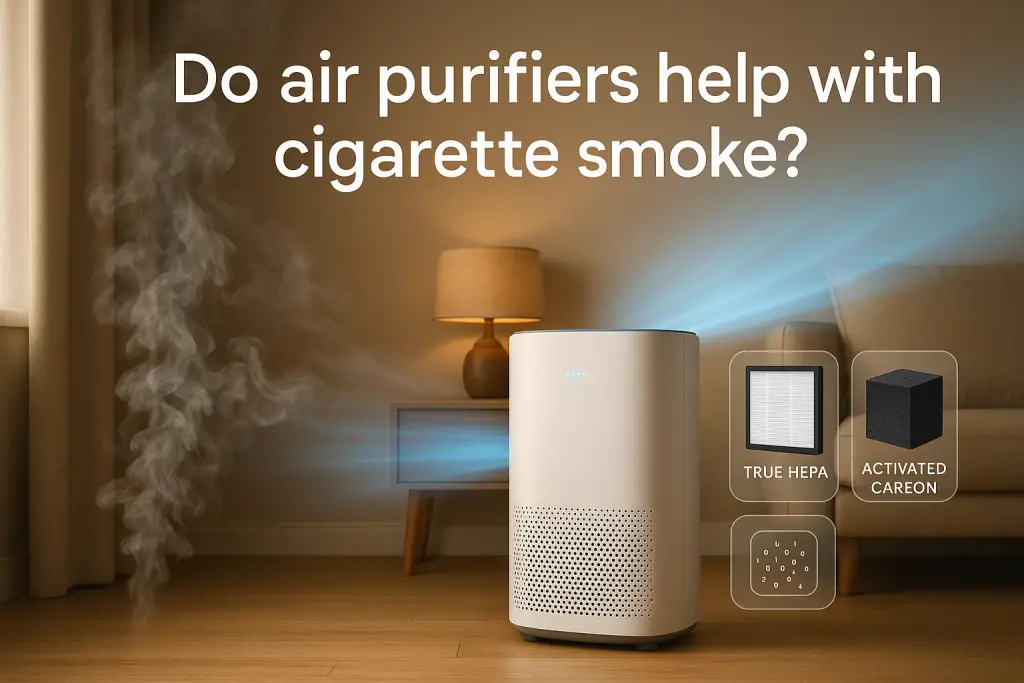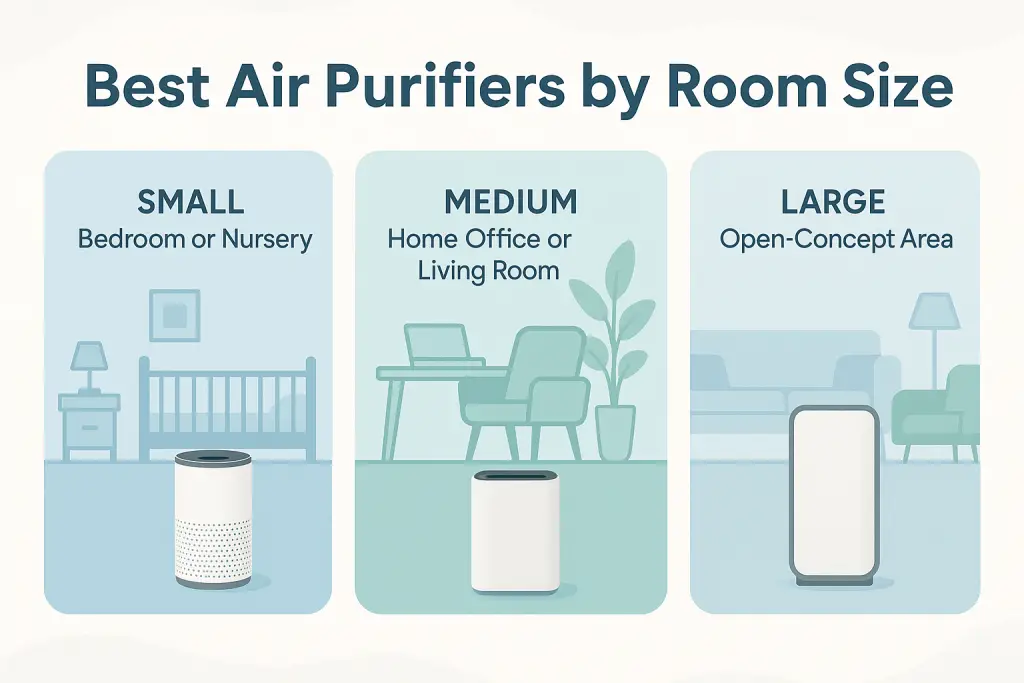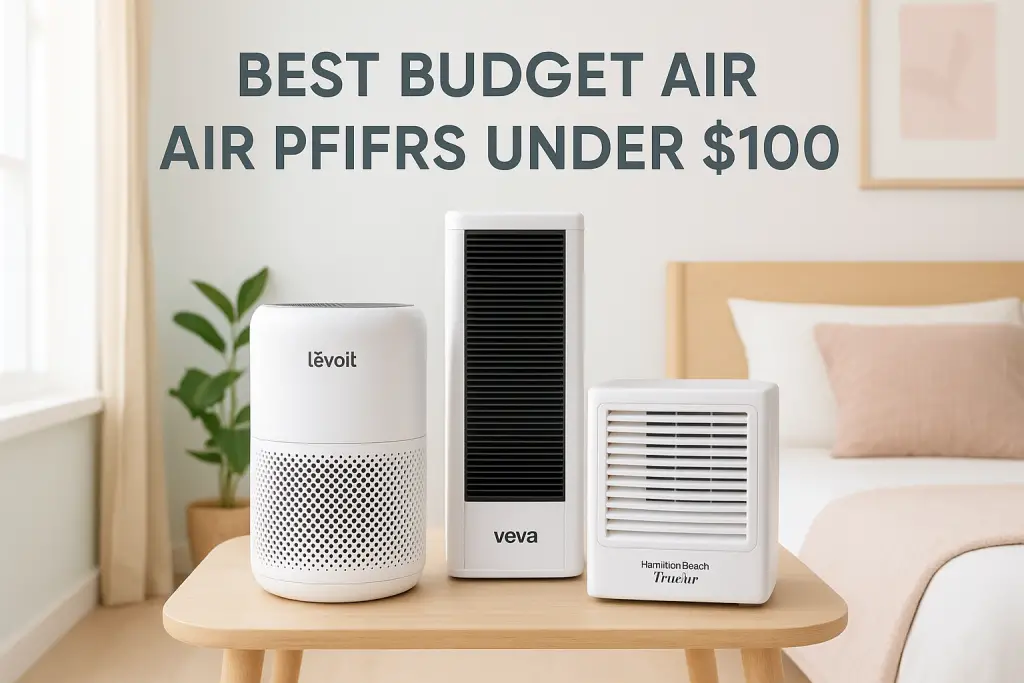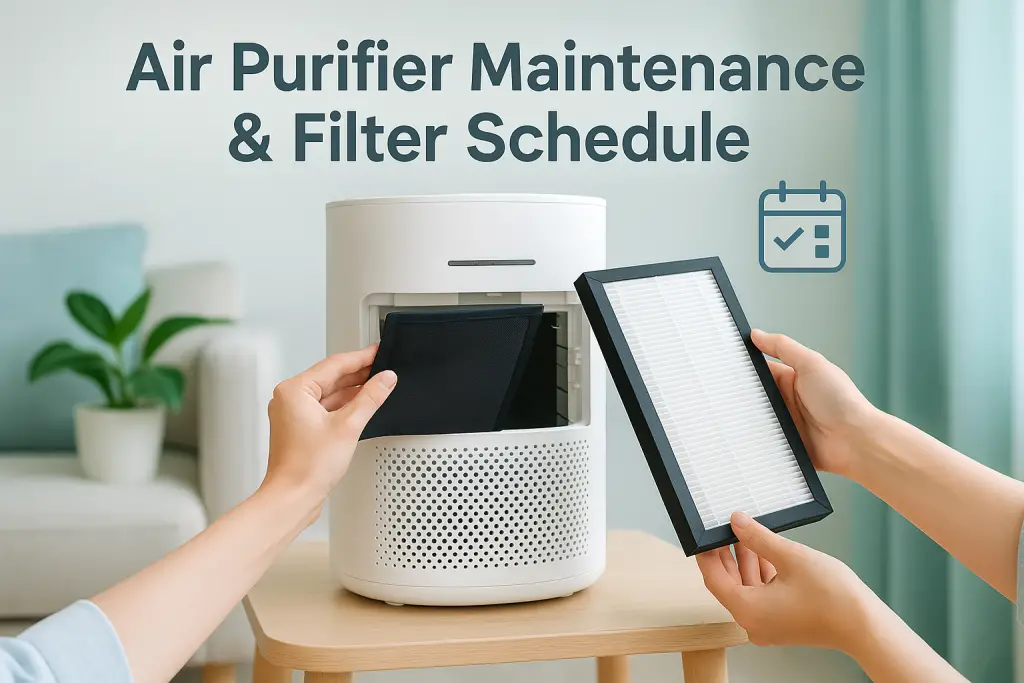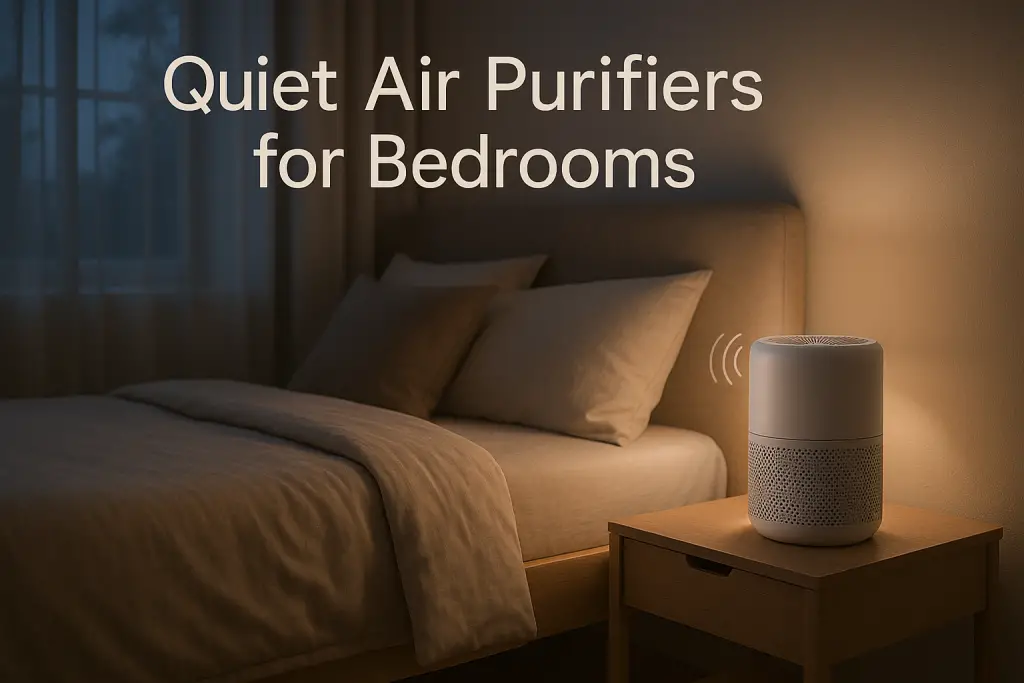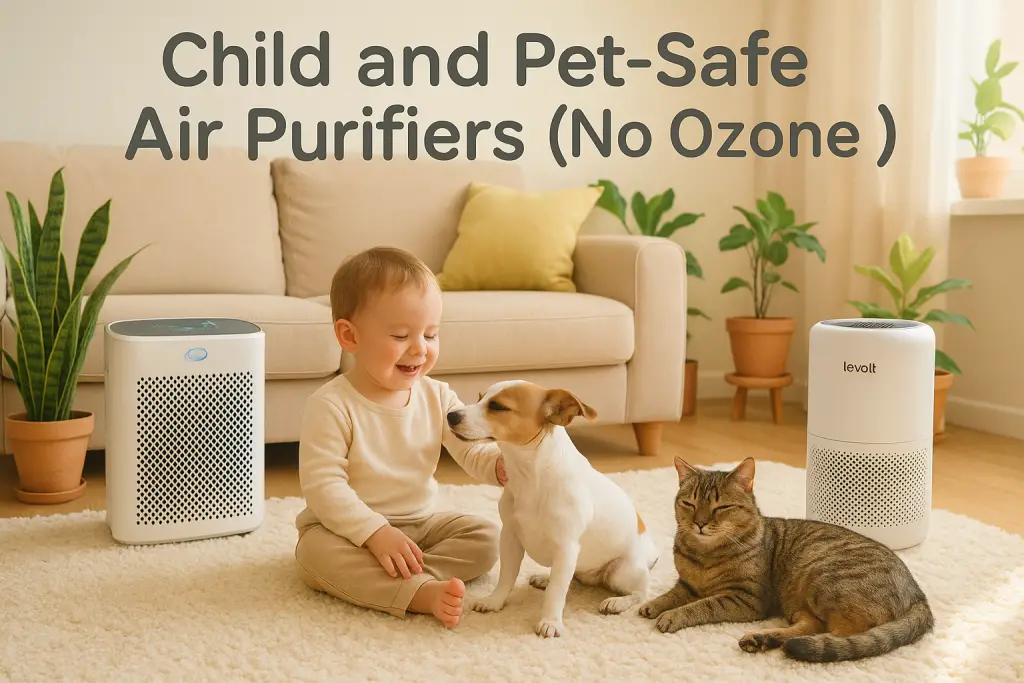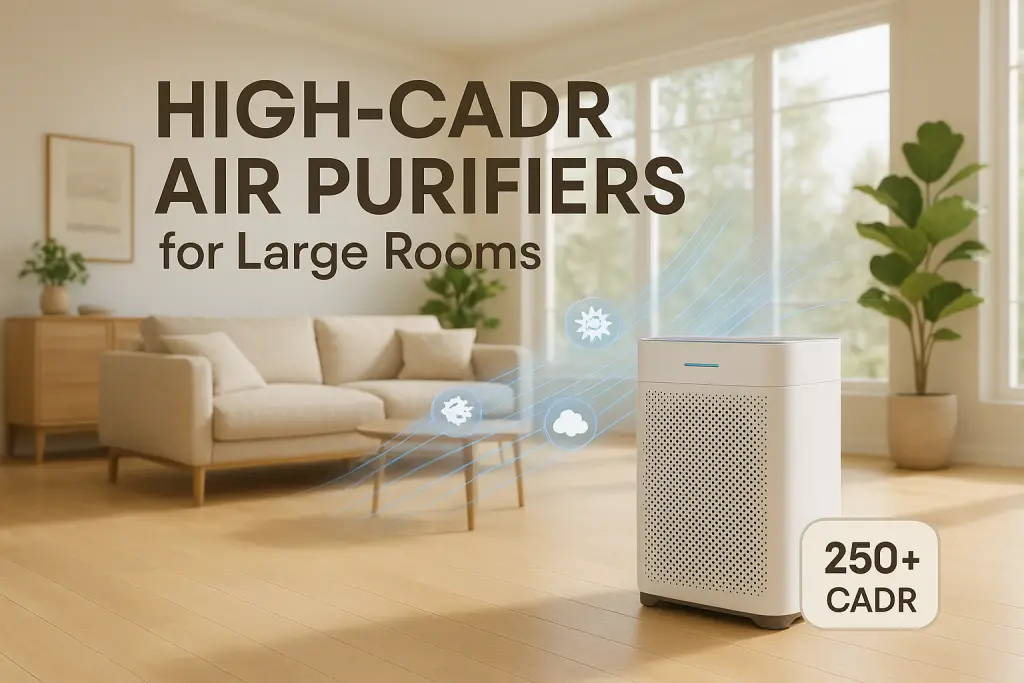Air purifiers can significantly reduce cigarette smoke, but they won’t completely eliminate it. The most effective air purifiers for cigarette smoke use a combination of True HEPA filters to capture particulate matter and substantial activated carbon to absorb gases and odors. While no air purifier offers 100% removal, the right unit properly sized for your space can substantially improve air quality affected by cigarette smoke.
Understanding Cigarette Smoke: Why It’s Difficult to Remove
Before discussing air purifier effectiveness, it’s crucial to understand what we’re dealing with. Cigarette smoke is not a single substance but a complex mixture of over 7,000 chemicals in different forms.
Cigarette smoke contains two main components:
- Particulate matter: Solid and liquid particles ranging from 0.1 to 1.0 microns in size, making them difficult to filter
- Gaseous pollutants: Volatile Organic Compounds (VOCs) and other gases that standard filters can’t trap
The EPA classifies cigarette smoke as a Group A carcinogen with no safe exposure level. What makes cigarette smoke particularly challenging is its ability to infiltrate nearly everything in your home.
The tiny smoke particles can penetrate deep into furniture, carpets, curtains, and walls, creating what scientists call “third-hand smoke” – the residue that remains long after visible smoke clears. These chemicals can be re-released into the air for months after smoking has stopped.
The VOCs in cigarette smoke include formaldehyde, benzene, and toluene – all known to cause respiratory issues and other health problems. These gaseous components require specialized filtration beyond standard air purifiers.
Health Risks of Secondhand and Thirdhand Smoke Exposure
Understanding the health impacts of smoke exposure helps illustrate why effective filtration matters.
According to the CDC, secondhand smoke contains over 7,000 chemicals, including about 70 that can cause cancer. There is no risk-free level of exposure. Each year, secondhand smoke causes:
- 41,000 deaths among nonsmoking adults
- 400 infant deaths from SIDS
- Increased risk of ear infections, asthma attacks, and respiratory infections in children
Vulnerable populations face even greater risks. Children exposed to secondhand smoke are more likely to develop asthma, and people with existing respiratory conditions may experience significant worsening of symptoms. For those with allergies and asthma, proper air purification becomes even more critical.
Recent research on third-hand smoke suggests these residual contaminants may cause DNA damage and have particularly harmful effects on developing children. A 2020 study in JAMA Network Open found that third-hand smoke can persist in homes for years after smokers have moved out.
How Air Purifiers Work Against Different Components of Cigarette Smoke
Air purifiers use different technologies to target various components of cigarette smoke, each with specific strengths and limitations.
HEPA Filtration for Particulate Matter
True HEPA filters capture 99.97% of particles as small as 0.3 microns. Many smoke particles fall within this range, making HEPA filtration essential. However, the smallest smoke particles (below 0.3 microns) may initially pass through before eventually being caught through diffusion processes.
Activated Carbon for Gases and Odors
Activated carbon works through adsorption – the process where gas molecules adhere to the carbon’s vast surface area. For cigarette smoke, substantial carbon filters (measured in pounds, not ounces) are necessary to handle the high concentration of VOCs and odor compounds.
For best results in spaces with frequent smoke exposure, look for ozone-free purifiers that use both technologies without adding harmful byproducts to your air.
Other Technologies
Some air purifiers include additional technologies:
- Ionizers: Create charged particles that cluster together for easier capture, but may produce trace ozone
- UV light: Kills microorganisms but has minimal effect on smoke components
- PECO (Photo Electrochemical Oxidation): Destroys pollutants at molecular level, including some VOCs
| Filter Type | Effective Against | Not Effective Against |
|---|---|---|
| HEPA | Smoke particles | Gases, VOCs, odors |
| Activated Carbon | Gases, VOCs, odors | Particulate matter |
| Ionizer | Enhances particle removal | Gases, VOCs |
| UV | Microorganisms | Smoke particles, gases |
According to research from the University of California, Davis, “The combination of HEPA and activated carbon provides the most comprehensive protection against both particulate and gaseous components of cigarette smoke.”
Do Air Purifiers Help with Cigarette Smoke? The Science-Based Answer
Yes, air purifiers do help with cigarette smoke, but with important limitations. Scientific testing shows properly equipped air purifiers can remove 95-99% of airborne smoke particles and a significant portion of gaseous pollutants.
Clean Air Delivery Rate (CADR) testing specifically for tobacco smoke provides standardized measurements of effectiveness. The Association of Home Appliance Manufacturers (AHAM) rates purifiers based on how quickly they filter smoke, dust, and pollen. For cigarette smoke, higher CADR ratings indicate faster smoke removal.
Independent laboratory testing reveals:
- HEPA + activated carbon units remove 80-90% of visible smoke within 30 minutes in controlled settings
- Gaseous components take longer to filter, with 60-80% removal typically requiring 1-2 hours
- Odor molecules often require the longest filtration time, with some lingering even after particles are removed
Key limitations to understand:
- Air purifiers cannot remove smoke that has already settled on surfaces
- They cannot completely eliminate all gaseous components
- Their effectiveness drops significantly in larger spaces unless properly sized
- Continuous smoking overwhelms even the best purifiers
Room size dramatically impacts effectiveness. A purifier rated for 300 square feet will struggle in a 500 square foot space. For larger rooms, high-CADR air purifiers are essential for meaningful smoke reduction.
Choosing the Right Air Purifier for Cigarette Smoke: Essential Features
Not all air purifiers are created equal when it comes to cigarette smoke. Here are the essential features to look for when choosing an effective solution.
Must-Have Features:
- True HEPA filtration: Accept nothing less for particle removal
- Substantial activated carbon: Look for units with at least 5-15 pounds of carbon for serious smoke filtration
- High CADR for smoke: Minimum 100+ for small rooms, 200+ for medium rooms, 300+ for large rooms
- Adequate coverage: Choose a unit rated for a space larger than your actual room size
- Quality pre-filter: Extends main filter life by capturing larger particles first
Filter replacement costs become significant in smoking environments. Filters typically last:
- Regular environments: 6-12 months
- Light smoking environments: 3-6 months
- Heavy smoking environments: 1-3 months
Calculate your annual costs by multiplying replacement filter cost by expected frequency. Premium models often offer better filtration but higher replacement costs.
For bedroom use, consider models that balance effectiveness with noise levels. Quiet air purifiers for bedrooms typically operate below 50 dB on lower settings while still providing good filtration.
Understanding CADR Ratings for Tobacco Smoke
CADR (Clean Air Delivery Rate) is a standardized measurement that tells you how quickly an air purifier can filter specific pollutants, including tobacco smoke.
For tobacco smoke specifically, CADR ratings typically range from 60-450, with higher numbers indicating faster cleaning. The rating represents the equivalent amount of clean air (in cubic feet per minute) the purifier delivers.
To determine the minimum CADR needed for your room:
- Calculate your room’s volume in cubic feet (length x width x height)
- For smoke environments, aim for a purifier that can process your room’s air 4-5 times per hour
- Divide room volume by 12-15 minutes to get your minimum CADR requirement
For example, a 200 sq ft room with 8-foot ceilings equals 1,600 cubic feet. Divide by 12 to get 133 – meaning you need a smoke CADR of at least 133.
Optimal Air Purifier Placement and Usage for Smoke Removal
Where you place your air purifier and how you operate it significantly impacts its effectiveness against cigarette smoke.
Ideal Placement:
- Position the purifier 3-5 feet from where smoking occurs
- Avoid corners and obstructions that block airflow
- Maintain at least 1-2 feet of clearance on all sides
- Place at breathing height (3-5 feet from floor) when possible
- For bedrooms, position between the bed and the door
- For living rooms, place near but not directly next to smoking areas
For best smoke removal:
- Run your purifier on high speed during and after smoking
- Continue operating for 1-2 hours after smoking stops
- Use continuous operation on lower speeds between smoking sessions
- Keep doors and windows closed while purifying
- Consider using ceiling fans to improve air circulation (but not during active smoking)
For larger spaces, multiple smaller units often work better than one large unit by creating a more balanced airflow pattern across the space.
Using smart air purifiers with app controls can help you adjust settings remotely when smoke levels increase, without needing to be in the smoky environment.
Beyond Air Purifiers: Complete Strategy for Reducing Cigarette Smoke
While air purifiers are helpful, they work best as part of a comprehensive approach to cigarette smoke management.
Ventilation Strategies:
- Open windows during or after smoking when weather permits
- Create cross-ventilation with fans blowing outward
- Install bathroom or kitchen exhaust fans that vent outdoors
- Consider window fans that exhaust directly outside
Surface Cleaning For Third-Hand Smoke:
- Clean walls with vinegar solutions or TSP (trisodium phosphate)
- Wash fabrics frequently in hot water with baking soda
- Steam clean carpets and upholstery
- Replace heavily contaminated items when possible
- Clean HVAC ducts professionally
Source Control:
- Establish outdoor-only smoking policies when possible
- Create a designated smoking room with separate ventilation
- Use smoke capturing devices near the source
- Close doors between smoking and non-smoking areas
For homes with serious smoke or incense issues, consider upgrading your HVAC filter to MERV 13 or higher for whole-home filtration, but be sure your system can handle the increased air restriction.
Absorption methods like activated charcoal bags, baking soda, and commercial odor absorbers can complement air purification by passively reducing odors in closets, drawers, and small spaces.
Addressing Third-Hand Smoke Residue on Surfaces
Air purifiers can’t remove smoke residue that has already settled on surfaces, which requires specific cleaning approaches.
Third-hand smoke contains nicotine, heavy metals, and carcinogens that bond chemically to surfaces. These toxins can be re-released into the air for months or years after smoking stops.
Effective Surface Treatments:
- Hard surfaces: Clean with a 50/50 vinegar and water solution or commercial TSP cleaners
- Walls and ceilings: Wash with vinegar solution, then apply stain-blocking primer before repainting
- Fabrics and upholstery: Use steam cleaning with enzymatic cleaners designed to break down nicotine
- Carpets: Professional extraction cleaning followed by baking soda treatments
- Wood and porous surfaces: Clean, seal with appropriate products, replace if heavily contaminated
For severe contamination, professional services using specialized equipment and chemicals may be necessary. Ozone treatments are sometimes used professionally but should never be used in occupied spaces.
Special Considerations for Different Living Situations
Your specific living situation affects both the smoke exposure patterns and the most effective solutions.
Apartment/Condo With Smoking Neighbors:
- Seal entry points with weatherstripping and door sweeps
- Place air purifiers near walls shared with smoking neighbors
- Use draft stoppers for under-door gaps
- Request maintenance check shared ventilation systems
- Consider legal options through management or local ordinances
Rental Properties:
- Use portable solutions that won’t modify the property
- Focus on surface cleaning methods safe for rental units
- Document smoke damage for security deposit protection
- Request professional cleaning of HVAC systems if possible
Protecting Children’s Rooms:
- Make these rooms strictly smoke-free zones
- Use air purifiers with child safety features
- Clean toys and surfaces frequently
- Keep doors closed during smoking elsewhere
- Use door draft blockers to prevent smoke infiltration
Cars and Vehicles:
- Use small HEPA/carbon air purifiers designed for vehicles
- Clean upholstery with baking soda and vinegar solutions
- Replace cabin air filters more frequently
- Leave windows slightly open when parked to allow ventilation
For those with respiratory conditions, create a dedicated “clean room” with sealed doors, windows, and a high-capacity air purifier running continuously.
Measuring Air Purifier Effectiveness: How to Tell If It’s Working
It’s important to objectively measure whether your air purifier is effectively reducing cigarette smoke rather than relying solely on perception.
Monitoring Options:
- Consumer air quality monitors: Devices measuring PM2.5 and VOCs provide real-time data
- Visual inspection: Check filter darkening patterns to assess particle capture
- Odor reduction: Track how quickly smoke smell dissipates compared to pre-purifier times
- Smoke test: Use incense to visually track air movement toward purifier
Expect to see:
- Particle counts drop by 80%+ within 30-60 minutes after smoking stops
- Filters darkening more quickly in smoking environments
- Reduced visible smoke in the air
- Decreased smoke odor (though likely not complete elimination)
For objective assessment, take baseline readings before installing an air purifier, then compare with readings after using it for the same period under similar conditions.
If your air purifier isn’t showing meaningful improvement after 2-3 hours of operation, consider:
- Unit may be undersized for your space
- Filters may need replacement
- Placement may be suboptimal
- Smoke sources may be overwhelming the unit’s capacity
Maintenance and Long-Term Considerations for Smoke Environments
In environments with cigarette smoke, air purifier maintenance requirements increase significantly, affecting both performance and long-term costs.
Filter Replacement Schedule:
- Pre-filters: Clean or replace every 2-4 weeks in smoking environments
- HEPA filters: Replace every 3-6 months (vs. 12 months in non-smoking homes)
- Carbon filters: Replace every 3 months for optimal odor control
Signs your filters need replacement:
- Visible darkening or yellowing of HEPA material
- Persistent smoke odor despite purifier operation
- Decreased airflow from the unit
- Unit running louder than normal
- Increase in allergy symptoms or irritation
Regular maintenance tasks:
- Vacuum exterior grilles and inlets monthly
- Wipe down exterior surfaces to prevent dust buildup
- Check fan and motor for accumulation of particles
- Test airflow regularly to ensure proper function
Budget for 2-4 times the normal filter replacement costs in smoking environments. Many manufacturers specifically exclude smoke damage from warranty coverage, so check your terms carefully.
FAQs About Air Purifiers and Cigarette Smoke
How long does it take an air purifier to remove cigarette smoke?
Most air purifiers can remove 80-90% of visible smoke particles within 30-60 minutes in appropriately-sized rooms. Gaseous components and odors can take 2-3 hours for substantial reduction. Complete odor elimination may take 24+ hours or may not be achievable if surfaces are contaminated.
Can air purifiers help with smoke from neighbors?
Yes, but effectiveness depends on how the smoke enters your space. Air purifiers work best when placed near entry points such as shared walls, ventilation systems, or doors. Sealing gaps with weatherstripping will improve results by reducing new smoke infiltration.
Are HEPA filters alone sufficient for cigarette smoke?
No. HEPA filters only capture the particulate matter in smoke. Without activated carbon, the gaseous components and odors will remain. For cigarette smoke, you need both technologies working together.
Are ionizers or UV lights helpful for cigarette smoke?
Ionizers can enhance particle removal by causing them to cluster and fall out of the air or stick to surfaces, but they don’t help with gases or odors. UV light has minimal effect on cigarette smoke components. Neither should replace HEPA and carbon filtration.
What about ozone generators marketed for smoke removal?
The EPA and American Lung Association strongly advise against using ozone generators. While they can mask odors, ozone is a lung irritant that can cause health problems worse than the smoke itself. Effective levels of ozone for odor removal exceed safe health standards.
How does cigarette smoke compare to other types of smoke?
Cigarette smoke particles are smaller than wood smoke (from fireplaces) but similar to cannabis smoke. Cigarette smoke contains more chemicals than incense smoke but fewer particulates than cooking smoke. All types require both HEPA and carbon filtration for effective removal.
Conclusion: The Realistic Approach to Managing Cigarette Smoke
When it comes to cigarette smoke, air purifiers are valuable tools with specific capabilities and limitations. The best air purifiers can significantly reduce but not completely eliminate cigarette smoke, particularly when paired with comprehensive strategies addressing ventilation, surface cleaning, and source control.
For effective smoke management:
- Choose air purifiers with both True HEPA and substantial activated carbon
- Ensure proper sizing based on room dimensions and CADR ratings
- Position units strategically for optimal airflow
- Maintain filters more frequently than standard recommendations
- Combine purification with surface cleaning and ventilation
Remember that third-hand smoke residue on surfaces requires separate cleaning approaches beyond what air purifiers can address. By combining the right air purifier with these complementary strategies, you can create a significantly healthier indoor environment even in homes affected by cigarette smoke.
| Photo | Air Purifier Model | Best for | Price |
|---|---|---|---|

|
WINIX A231 Air Purifier | Asthma & Indoor Pollution | Check Price On Amazon |

|
Rabbit Air, A3 SPA-1000N Air Purifier | Pet Dander & Odors | Check Price On Amazon |

|
LEVOIT Air Purifier | Best Overall | Check Price On Amazon |

|
GermGuardian Air Purifier | Cigarette & Cooking Smoke | Check Price On Amazon |

|
Coway Airmega Air Purifier | New-borns | Check Price On Amazon |

|
BLUEAIR Air Purifier | Germ & Virus Control | Check Price On Amazon |
